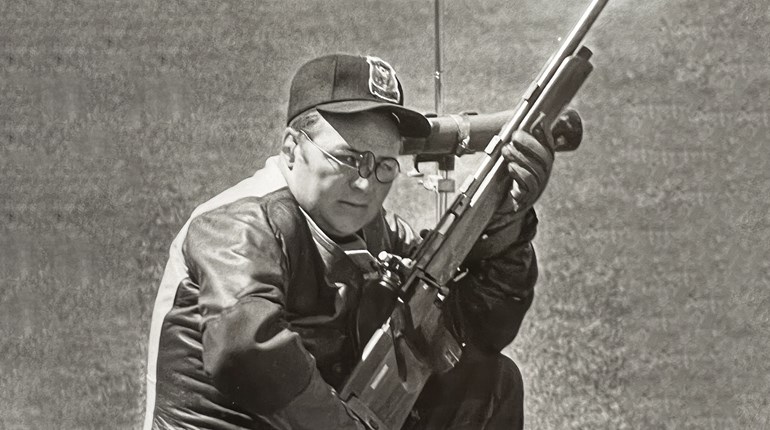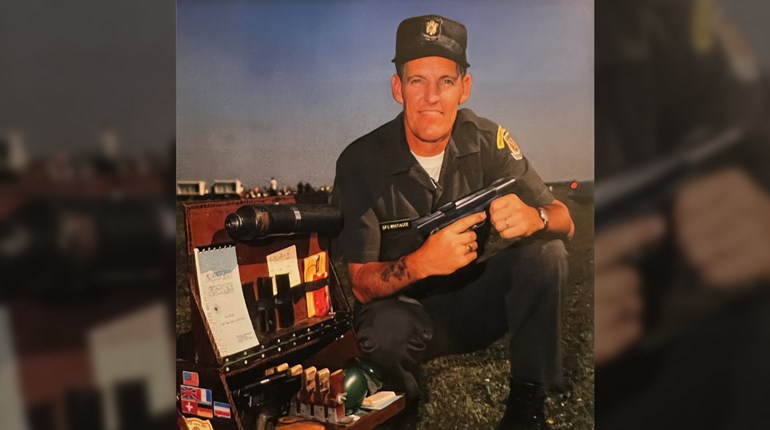
In the Treaty of Paris, which finally ended the long and brutal American Revolutionary War (1775-1783), Great Britain officially recognized the fledgling United States of America as a nation. As part of the agreement, England also ceded ownership of the Northwest Territory to the U.S. It was an immense area north and west of the Ohio River that would one day become five future states: Ohio, Indiana, Illinois, Michigan and Wisconsin.
The major problem with the agreement was that it completely ignored tens of thousands of people who were already living in the Northwest Territory, and whose descendents had been living there for hundreds if not thousands of years. Those people were Native Americans, consisting of dozens of tribes, who were not about to give up their claims on the land without a fight. The battle line had been drawn, and that line was the Ohio River.
The first army that President George Washington sent against the Indians was led by General Josiah Harmar, who was totally inept in the ways of waging wilderness warfare. As a result, Harmar lost 109 men during a brief 1790 fall campaign. Killed were two majors, three captains, five lieutenants, one ensign and 98 rank and file soldiers. The Indians, by contrast, lost relatively few warriors.
One year later, in 1791, the next general to march his troops against the tribes was Arthur St. Clair; ironically, he was the man who had sent Harmar to the same task. And if Harmar’s campaign could be termed a miserable failure, St. Clair’s was nothing short of disastrous. His clash with the Indians would come to be known as “The Battle of a Thousand Slain.”
Sixty-six Indians were killed during the three-hour engagement along the banks of the Wabash River, but the bodies of 832 American soldiers and camp-followers were scattered over the battlefield when the fighting was finally over. Of the 52 officers in the fight, 39 were killed and seven wounded. General St. Clair himself had eight bullet holes in his clothing and hat but was otherwise not hit. Only 24 men returned to Fort Washington along the Ohio River uninjured. It was the greatest defeat ever of an American military force at the hands of Native Americans. Three times more soldiers were killed during the battle than would die at Custer’s Last Stand in Montana Territory 85 years later.
President Washington, now livid with both Harmar and St. Clair, as well as the Indians, set out to find a much wiser and capable general he knew could crush the amalgamated tribes of the Northwest Territory. He strongly believed that man was General “Mad Anthony” Wayne, a nickname Wayne’s troops had respectfully given him during the Revolution. Brilliant and dashing, Wayne was considered rash and erratic by many, yet well disciplined, and Washington hoped Wayne could impart that strict discipline to his troops.
General Wayne was given a year to raise an army of 3,500 men, made up of both regulars and militia. Once fully trained, the army began marching north from the Ohio River in October 1793, erecting supply forts along the way as they went. One of those forts was named Fort Greenville, where Wayne and his army spent the winter. During that time he continually sent envoys to the tribes offering peace.
Most of the tribes were confident that Wayne’s army could be defeated just as Harmar’s and St. Clair’s had, so long as the Miami chief Little Turtle and the Shawnee chief Blue Jacket would once again lead them into battle. But, surprisingly, Little Turtle was now hesitant, urging the Indian confederation to consider a reasonable compromise with the whites rather than once again choose war. Standing to speak during a large council he raised his hand for silence, then offered the following solemn advice.
“Brothers, we have beaten the enemy twice under separate commanders. We cannot expect the same good fortune always. The Americans are now led by a chief who never sleeps. The night and day are alike to him, and during all the time that he has been marching on our villages, notwithstanding the watchfulness of our young men, we have never been able to surprise him. There is something that whispers to me that it would be prudent to listen to his offers of peace.”
Little Turtle then sat down and listened quietly to the remaining discussions. Ultimately, the majority of chiefs at the council voted to continue the fight.
The inevitable battle took place along the banks of the Maumee River in what is now northwest Ohio. The Indians had ensconced themselves in a large area of downed, jumbled trees that had been blown over by a tornado, and General Wayne sensed it would be suicide for his troops to do battle with the braves in such heavy cover. A ruse was needed to get the Indians out into the open. Wayne also knew that Indians typically fasted before a battle, so he took his time making his way to the battlefield, knowing the warriors would grow hungrier and weaker the longer he tarried.
At about 9:00 a.m. on August 20, 1794, Wayne ordered 500 mounted riflemen to approach the fallen timbers, instructing them to draw fire from the Indians, engage them briefly, then fall back in apparent chaos and confusion. The horsemen did so, and the Indians took the bait. Screaming their war cries, they poured from the downed woods in pursuit of the retreating cavalry...only to be met head-on by the main body of the army moving rapidly forward.
The only part of Wayne’s battle plan that did not succeed was when a hidden third of the army did not hear the drum roll that was signaling it to move in behind the warriors, surrounding them. As a result, a retreat remained open to the braves. The Indians took it; retreating in a running battle to the British-controlled Fort Miamis about four miles downriver, seeking aid. Despite them pounding on the fort’s heavy wooden gates with their fists, demanding that their English allies during the Revolution allow them entry, the fort’s doors remained solidly closed. With the Americans hot on their heels, the Indians eventually gave up their pleas for help from the fort and melted into the surrounding woodlands. The Battle of Fallen Timbers was over—and it was the final fight of the Northwest Indian War.
Fewer than 100 men on both sides, total, had been killed, yet the Indians saw the battle as an American victory, and their chiefs began entreating General Wayne for peace almost immediately. He graciously accepted their requests, and encouraged them to attend a peace conference scheduled for the following summer at Fort Greenville. The result of that weeks-long meeting, attended by more than 3,000 Indians including 91 chiefs of various tribes, was the historic Treaty of Greenville. It stated, in part, that the Indians could continue their hunting anywhere throughout the Ohio country, but must no longer live south of a line—The Greenville Treaty Line—that essentially divided Ohio in half north and south.
Wayne would die a year later, December 15, 1796. Suffering complications from severe gout, he was aboard a sailing vessel on Lake Erie headed east seeking better medical care when his condition grew suddenly and severely worse. The ship’s captain put in at Erie, Pennsylvania, and Wayne was gently carried into the fort at Presque Isle. He died before sunset, and his remains are buried at the base of the fort’s flagpole.
Considered one of the most important American military figures of his time, General “Mad Anthony” Wayne was a hero to many. So much so, that a man by the name of Christian Schultz of New York set out to find Wayne’s grave 11 years after the burial, to pay his respects. But what Schultz eventually discovered both saddened then angered him. He found the grave unkempt, the surrounding wooden palings all but entirely rotted away. And the weathered, misshapen headstone had no name upon it, only two initials—A. W.—the two letters looking as if they had been scratched into the soft stone with a rusty nail. Incensed, Schultz took a penknife from his pocket and boldly carved beneath the initials: SHAME ON MY COUNTRY.
If you’d like to visit the Fallen Timbers Battlefield, it is located in Maumee, Ohio, immediately southwest of Toledo, managed by Toledo Metroparks and the National Park Service. For more information, go online to https://metroparkstoledo.com/explore-your-parks/fallen-timbers-battlefield-ft-miamis/.





































